

(DIGICAMHISTORY.COM IS A REGISTERED U.S. TRADEMARK)
Established 5 Sep 2001
The first ever, and still by far the most
complete virtual
history museum of film cameras to digital photography
and space exploration imagers on the web
To check out our current stats at any time go to: http://digicamhistory.com/usage/
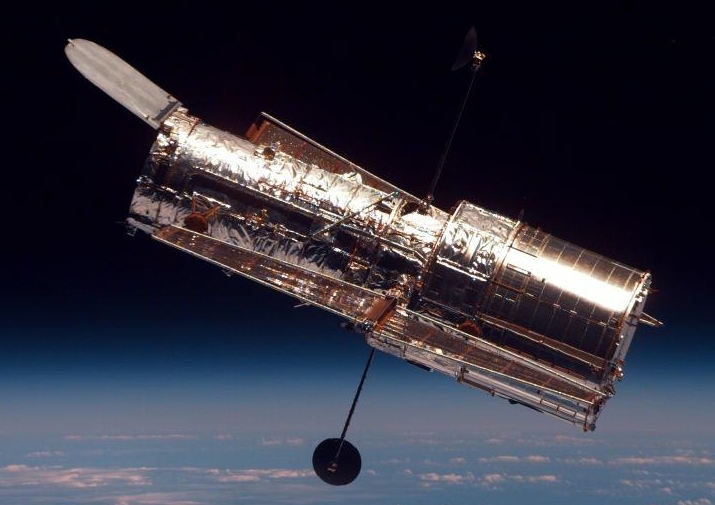
UPDATE:
On October 14, 2024 Europa Clipper was launched. Jim has
two 4k x 2k x 10 um CMOS imagers on board .. installed into two
cameras . . . wide and narrow view. Europa Clipper is a space
probe developed by NASA to study Europa, a Galilean moon of
Jupiter. Jim currently has ten imagers on various active
space probes.

WELCOME!
DigiCamHistory.Com is a non-profit, educational site provided for the free use of all digital camera enthusiasts. Material on this site is provided for the free use of interested persons and we do not require that you obtain our permission to use any part of this site. On the contrary, site operators in non-English speaking countries are encouraged to copy and translate site contents into their native language. Unlike some similar sites, we provide reference URL links so that researchers can easily obtain additional information or photos of each of the items shown on our site. Visitors, including manufacturers, are encouraged to submit topics or photos concerning the historical development of consumer digicams for inclusion on this site as well as corrections, and/or additional information. Please provide sources such as URLs that can be easily verified, or arrange to mail hard copies of articles, photocopies of book pages, etc.
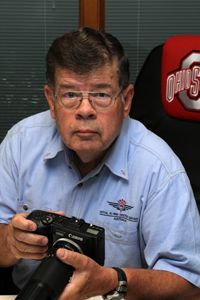
Collection SURVEY: We are interested to know how many collectors of digicams there are world-wide. Reply to the EMAIL address below with your area (Europe, Asia, U.S. etc.) and how many cameras are in your collection and any other information you wish to share. We will report results later. (Please don't include information that can identify you or the location of your collection)
1. A collector in Germany has about 500
cameras in his collection. Others we know of:
2. Dennis van Hall at https://www.digitalkameramuseum.de (Germany) has a great collection.
3. Digicammuseum.de (Germany) has more than 150 digicams in its collection.
4. nikon and wine, vendor/collector (Austria) has a very large
collection of digicams, some for sale.
Future of the DigiCamHistory.Com camera collection?
When we began the collection many
years ago we naively assumed that a future organization or museum would
be happy to obtain it for our out-of-pocket costs (now about $65K) and
without renumeration for the thousands of hours spent researching and
amassing the collection, especially as the original MSRPS of the items
in the collection exceeds $1.4 million when adjusted for
inflation. In actuality, only one museum (located in England) has
shown interest in the collection. Mr.Winkleman, who is opening a
digital photography exhibition in South Carolina, has given
no indication that he wishes to have a digicam collection as part of
his museum.
Since we humans have a limited
lifespan, it will be necessary to eventually find a new home for the
collection or leave it to our heirs who will most likely place it up
for sale piecemeal on eBay thereby negating the years of effort spent
building it, a collection which contains many rare and even unique
items. If you are aware of any organization that might be
interested in obtaining such a collection for a fraction of its true
cost, please have them contact us. Unlike some others who have
have purchased rare digicams over the years with a profit motive, it
was never our intent to do so, but only to save early model digicams
for the enjoyment of future generations. All items in the
collection are securely boxed and labeled with the name of the
manufacturer, model number and date of marketing. Individual
cameras in the collection are shown on our site with the yellow icon,
"Museum Collection".
![]()
Our 20th Anniversary - 5 Sep 2001 - 5 Sep 2021
Now averaging more than a quarter million visitors per year.
DigiCamHistory.Com Stats as of February 2022:
(Updated from February 2018)
Photos on Site - 2379
(Up 252 from 2018)
Digicams Shown / Reported on - 566
(New item since 2018)
Links to Other Sites - 1573
(Up 377 from 2018)
Cameras in Collection - 568
(Up 83 from 2018)
Digital Cameras in Collection - 355
(New item since 2018)
Collection Digicams Rarity on U.S. eBay:
54 Rare, 11 Very Rare, 6 Extremely Rare
(New item since 2018)
Technological Firsts Shown - 308
(Up 161 from 2018)
Technological Firsts in Collection - 110
(New item since 2018)
Spacecraft / Astronomical Imagers - 42
(Courtesy of James Janesick)
Above figures do not include other equipment such as recorders/players,
projectors, etc., nor historical books, magazines and other collectible items.
Space Technology Donations
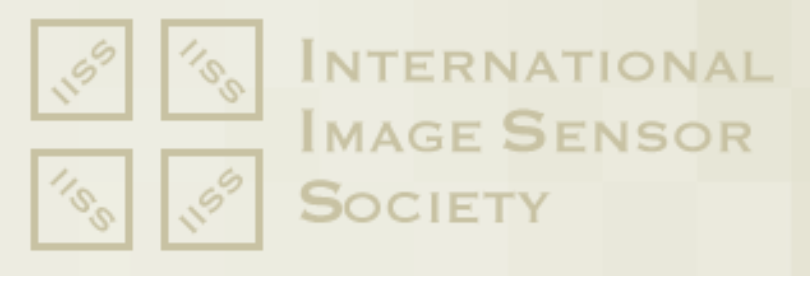
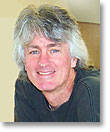 Jim
was awarded the 2019 International Image Sensor Society
Exceptional Lifetime Achievement Award for work done in field of
solid-state image sensors, especially development of the Photon
Transfer Curve which is recognized world-wide as "THE STANDARD" for
characterizing image sensors. He also has an asteroid named after
him, 4558 Janesick, in honor of his contributions to the
development of CCDs for astronomy and the education of
astoromers in use of CCDs for their work.
Jim
was awarded the 2019 International Image Sensor Society
Exceptional Lifetime Achievement Award for work done in field of
solid-state image sensors, especially development of the Photon
Transfer Curve which is recognized world-wide as "THE STANDARD" for
characterizing image sensors. He also has an asteroid named after
him, 4558 Janesick, in honor of his contributions to the
development of CCDs for astronomy and the education of
astoromers in use of CCDs for their work. 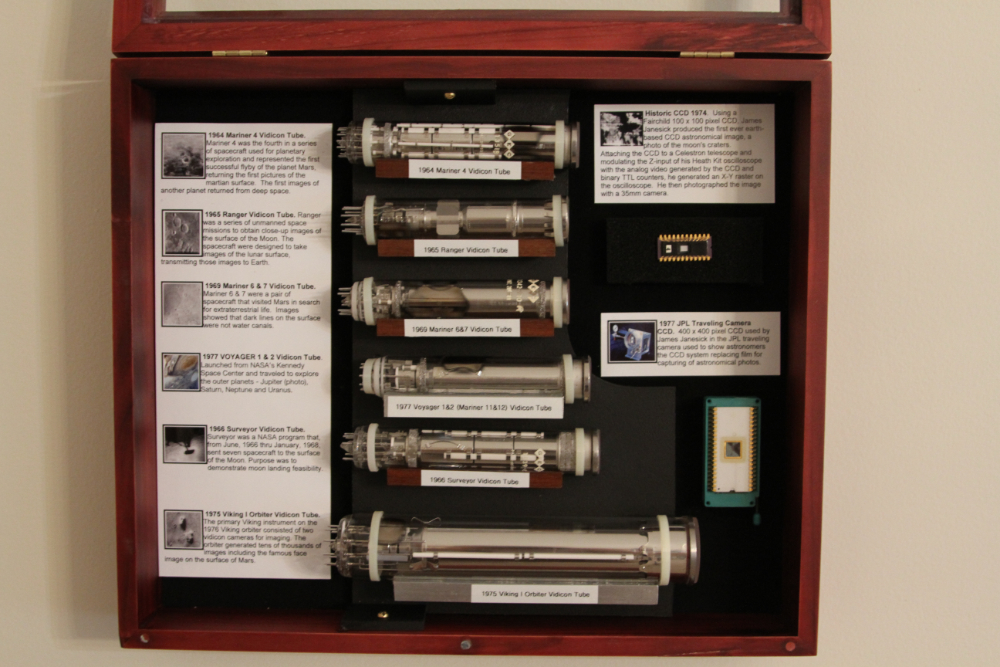
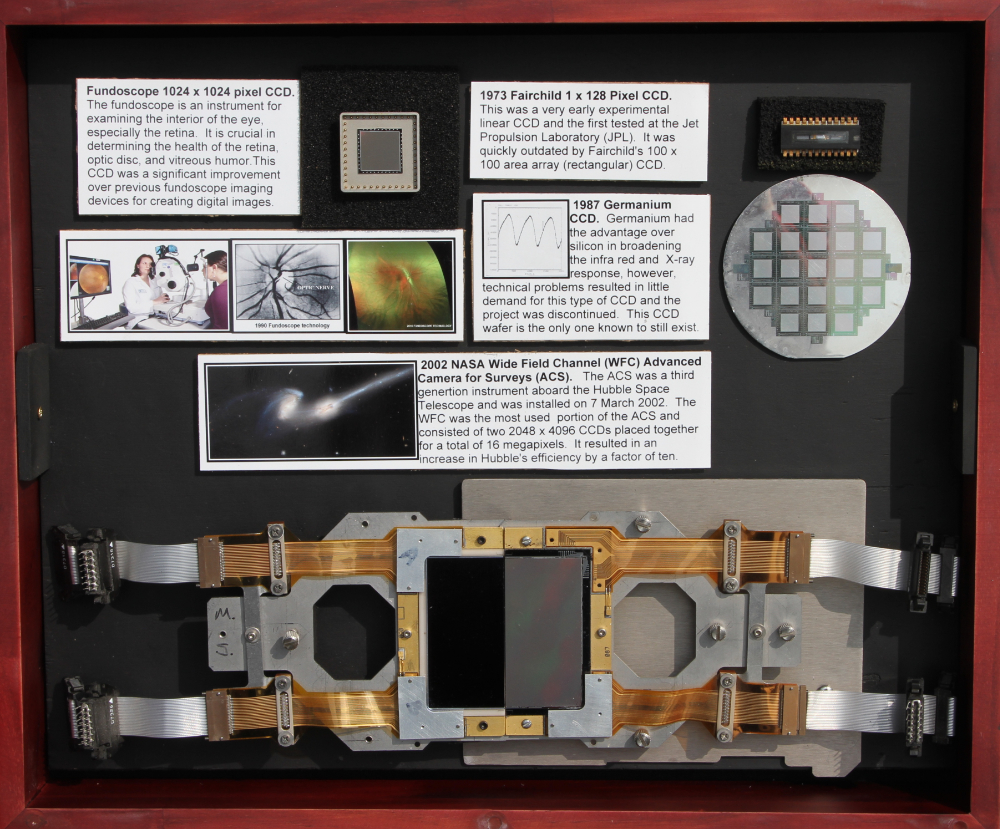
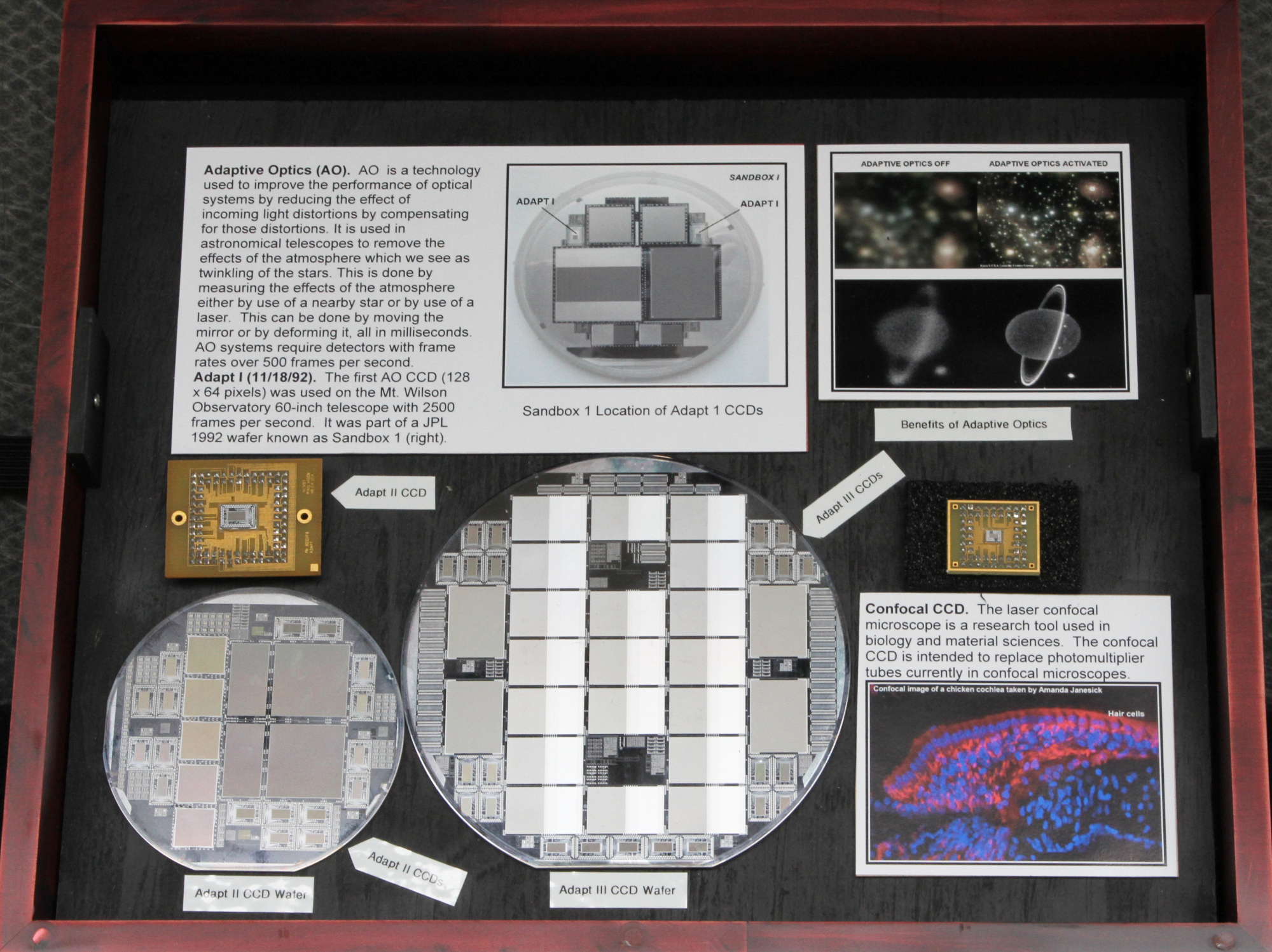
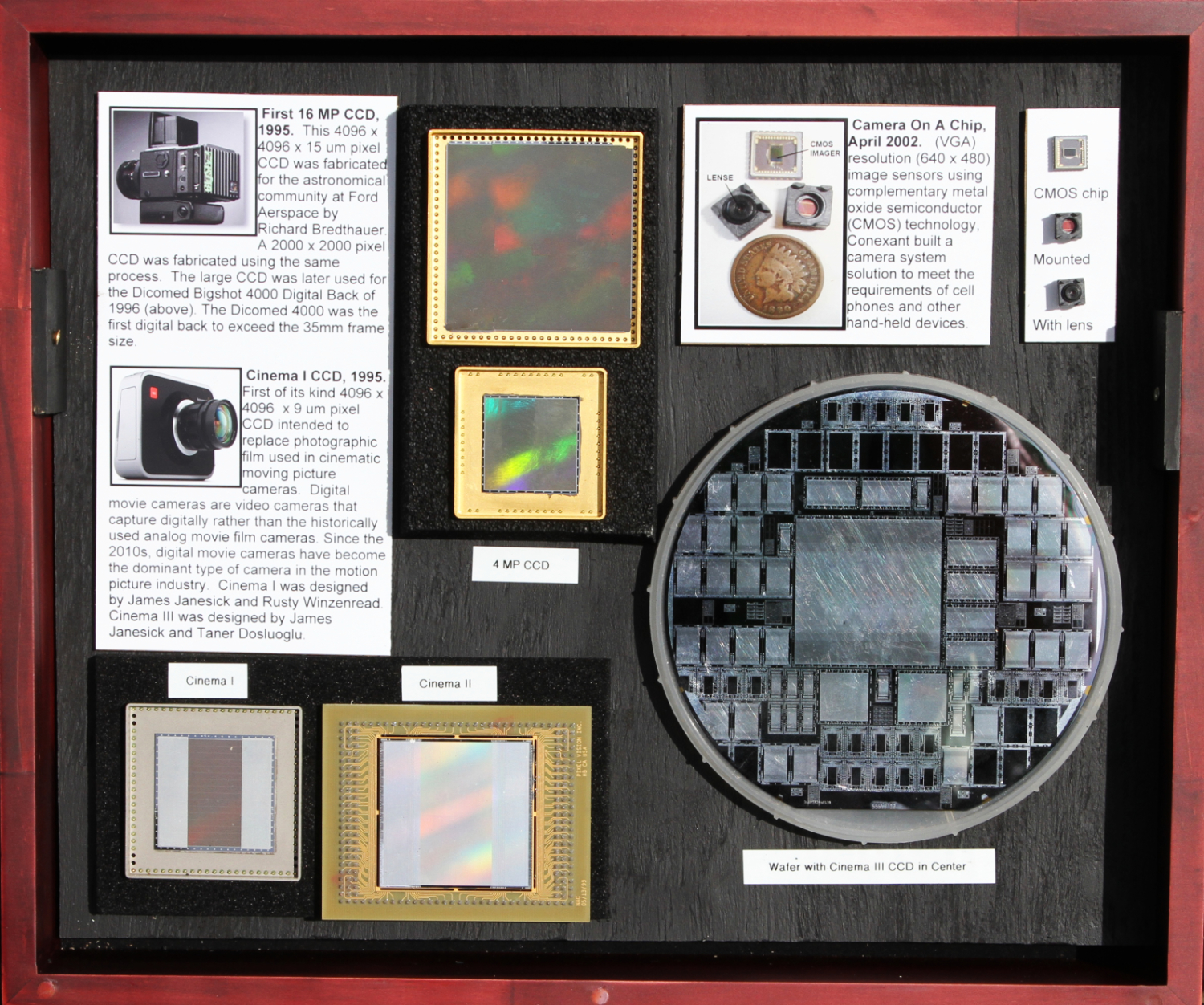
Check this site out - www.digicammuseum.de - A must-visit site for those interested in digital camera collecting, camera repair and many other subjects. Covers many topics not available on our own site. Operated by Boris Jakubaschk with input by noted photographer Ralf Jannke and others . It is a German site, but available in various languages including English. We give it a 10 out of 10 rating. Once you visit there you will go back again and again. English: https://www-digicammuseum-de.translate.goog/?_x_tr_sl=de&_x_tr_tl=en&_x_tr_hl=en&_x_tr_pto=sc
Want to buy a new camera? By far the best site for camera reviews, forums, etc. is DPReview at http://www.dpreview.com
The best technical site for digital camera historical information is the Digital Kamera Museum at: https://www.digitalkameramuseum.de
Click on images below to see attached photo albums
Ohio Swim Man on the Moon MX Underground Missile Test Project ICBM Minuteman II Launch Control Facility
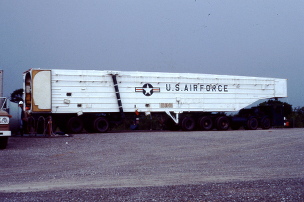

3 Pages
HELP WANTED! Click here to assist in identifying unknown digicams.
Article:
F-Stops Defined (F-stops simplified).
This article appeared in the April / May 2000 issue of MAV! online
magazine. It provides an explanation of f-stops, how they were
derived and why they are used.
Cameras: If you are looking for a particular camera click on the "FINDER" page in the below table. It will take you to the page of any camera listed.
THE AMERICAN CONNECTION: U.S.
technology and research was the driving force behind the development of
today's digital photography. Click on the blue lettering to see a list
of more than fifty major American contributions leading to the digital
cameras now used throughout the world.
Know Someone Who Wants to Become Immortral? Click Here Now!

The blue ribbon next to an item indicates a technological first.
![]()
The above yellow rectangle indicates that an item is included in the DigiCamHistory.Com museum collection.
(If you have a camera that does not have the yellow rectangle beside it, feel free to donate!)
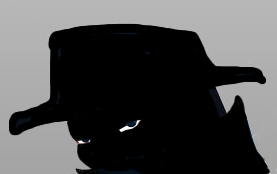
The above icon is used to indicate items that have been used in our spy sattelite program
Please visit www.cyclomobile.com to read about my grandfather, Earl M. Morley, a 20th Century inventor.
Why stop at 1998? Except
for a few cameras we purchased after 1998, this site
is dedicated to those digicams that came before 1999. There are
several reasons for this. The first is that current popular
photography sites such as DP Review are not historical sites, thus do
not have a section devoted to the very early digicams, nor to the film
cameras that came before them. The second reason is that,
beginning about 1998, there was an explosion in the popularity of
digital photography and sites such as DP Review have covered all new
digicams of significance since that time. Of course, they do not
cover minor brands or very inexpensive models that are of no interest
to serious historians as some sites do.
A
word
about dates.
When known, the
earliest
applicable date is shown. This is usually the date of
introduction,
announcement, or when the camera first appeared at one of the various
technical
shows. Since any particular digicam took some time to engineer
and prepare even in prototype form, a date of one year prior to an
announcement date is also appropriate in many cases. Dates shown
on other web sites are usually the market
introduction
date in a particular country and sometimes fall into a calendar
year following the date shown on our site.
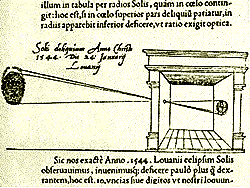
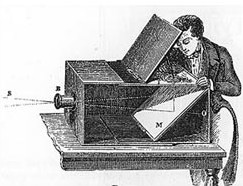 CAMERA OBSCURA - 1490.
Leonardo da Vinci wrote the first detailed description of camera
obscura in his Atlantic Codex, a 1,286 page collection of drawings and
writings. The principle of camera obscura involves punching a hole in a
dark box and putting a piece of light-sensitive material on the other
side thereby providing a photo-like image, but upside down. The first picture of a pinhole
camera obscura is a drawing by Gemma Frisus' De Radio, an astronomer
(above left). He used the pinhole in his darkened room to
study the solar eclipse of 1544. Viist the web site of Stewart Lewis
Woodruff at users.rcn.com/ stewoody/quote.htm and learn how to build and use pinhole cameras (camera obscuras).
CAMERA OBSCURA - 1490.
Leonardo da Vinci wrote the first detailed description of camera
obscura in his Atlantic Codex, a 1,286 page collection of drawings and
writings. The principle of camera obscura involves punching a hole in a
dark box and putting a piece of light-sensitive material on the other
side thereby providing a photo-like image, but upside down. The first picture of a pinhole
camera obscura is a drawing by Gemma Frisus' De Radio, an astronomer
(above left). He used the pinhole in his darkened room to
study the solar eclipse of 1544. Viist the web site of Stewart Lewis
Woodruff at users.rcn.com/ stewoody/quote.htm and learn how to build and use pinhole cameras (camera obscuras).
https://en.wikipedia.org/wiki/Camera_obscura#/media/File:Camera_Obscura_box18thCentury.jpg
https://www.britannica.com/technology/camera-obscura-photography
1800s

FIRST
PERMANENT CAMERA PHOTOGRAPHS - 1825-26.
Photographic history has recently been rewritten following the
discovery
of what is now considered to be the world's oldest photograph.
The
image, a reproduction of a 17th century Dutch print, predates by one
year
Frenchman Niepce's previous heliogravure of the
view from his window at Le Gras, regarded until now as the earliest
surviving
photographic image.
In the early 1800s, Joseph Nicephore Niepce experimented with lithography at his home near Chalon, France. Nicephore explored light-sensitive varnishes, trying to find a coating that would record drawings after exposure to light. In 1816, he took photos using a camera and paper sensitized with silver chloride. He had some success, but was dissatisfied because the images were reversed (negatives) and could not be made permanent. He had tried to produce a positive print, but was unable to do so. He did find that nitric acid helped to preserve images for a while, but would not prevent eventual fading. Niepce's breakthrough came in 1822 when he made a permanent image using a camera obscura. After exposing coated pewter plates to a camera image, he used the vapors from heated iodine crystals to darken the silver and heighten contrast. The method would later inspire Louis Daguerre's successful mercury vapor development process. Within a few years the two inventors would become partners. Niepce was able to produce a copy of an engraving by passing light through the original photo onto a piece of glass coated with bitumen of Judea, a type of asphalt. Light hardens bitumen of Judea, so when Niepce washed the plate with solvent only the unexposed portions were removed, leaving a permanent image on the plate. He named this process heliography or sun-writing. He made numerous heliographs during the next several years and continued his attempts to produce a permanent camera image. In 1825, he was successful.
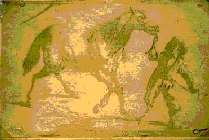
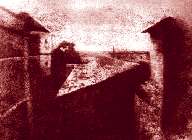
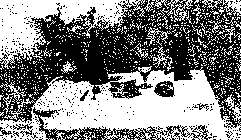

Oldest
known photos, 1825 and 1826. Click on images for enlarged views.
The first image is a reproduction of a 17th century Dutch engraving showing a man leading a horse. The photograph was sold at Sotheby's in Paris on March 21, 2002, to the French National Library for $443,000. The Niepce correspondence that accompanied the print gave a step-by-step account of how Niepce made his discovery. The print is the only surviving testament to Niepce's achievement in the summer of 1825 using light alone to make a plate from which an image could be printed.
The world's second oldest known permanent camera image, bitumen on pewter, is a view taken from Niepce's second floor window. The exposure took approximately eight hours. The third image was reportedly also made in 1826.
Additional information concerning Joseph Niepce can be found at:
http://news.bbc.co.uk/1/low/world/europe/1885093.stm
http://www.artsjournal.com/archives/zvisual%20arts%2003-02.htm
http://www.photogallery.it/storia/icrono.html
http://www.olinda.com/Art/art_lectures.htm
http://www.olinda.com/Art/Beginnings/early_photography.htm
http://www.chez.com/photoimage/niepceet.htm
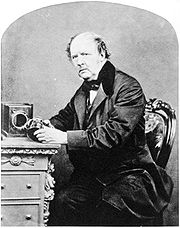
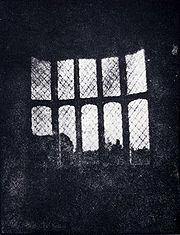
WILLIAM HENRY FOX TALBOT FIRST NEGATIVE - 1835. The inventor of calotype process, the precursor to most photographic processes of the 19th and 20th centuries. He was also a noted photographer who made major contributions to the development of photography as an artistic medium. His work in the 1850s on photo-mechanical reproduction led to the creation of the photoglyphic engraving process, the precursor to photogravure. Talbot is also remembered as the holder of a patent which, some say, affected the early development of commercial photography in Britain.
Talbot's original contributions included the concept of a negative from which many positive prints can be made (although the terms negative and positive were coined by Herschel). Talbot's negative/positive process eventually succeeded as the basis for almost all 19th and 20th century photography. The daguerreotype, although stunningly beautiful, was rarely used by photographers after 1860, and had died as a commercial process by 1865.
The photograph on the left is of Talbot in 1864 by John Moffat. The photo on the right is a print from a Talbot negative, the oldest known negative in existence.
http://en.wikipedia.org/wiki/William_Fox_Talbot
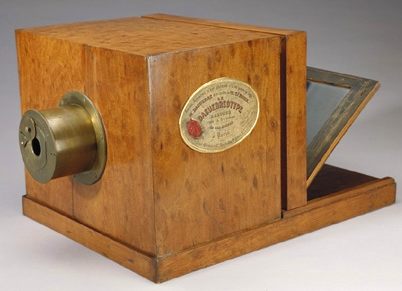

FIRST
PRODUCTION CAMERA - 1839.
Daguerrotype
cameras of 1839 produced by Giroux in Paris. They weighed 120
pounds
each and cost 400 Francs (about $50). See the George Eastman
Photography
Collections Online for much additional information concerning this
camera
as well as excellent photos and detailed information regarding many
other
early cameras.
https://www.eastman.org/collection-highlights-technology
https://www.eastman.org/search-collections
ALEXANDER S. WOLCOTT - First Photography Patent - 1840.
Alexander Simon Wilcott was born in 1804, in New York. He was a dentist
by trade and machinist. On May 8, 1840 Alexander Wolcott, with the
assistance of John Johnson
Sr., received the first American patent for photography (US Patent No.
1582) for their Daguerreotype mirror camera, which did not have a lens.
The camera was based on a concave reflecting mirror built by an
associate Mr Henry Fitz, similar to those used for making celestial
telescopes. The Wolcott & Johnson patent camera enabled the
successful taking of life portraiture by significantly reducing the
subjects sitting time from 30 minutes to only 5 minutes, while still
using Daguerre's chemical formula. Mr Johnson Sr. paid Daguerre 150
pounds for the use of his process. Wolcott and Johnson patented the camera which became known as
"Wolcott's camera" and the "mirror camera". In March 1840, they opened what is
considered to be the world's first portrait studio. It was called the
Daguerreian Parlor. Wolcott died at the age of 40.
https://silverhalloffame.com/bios/alexander-wolcott/#google_vignette
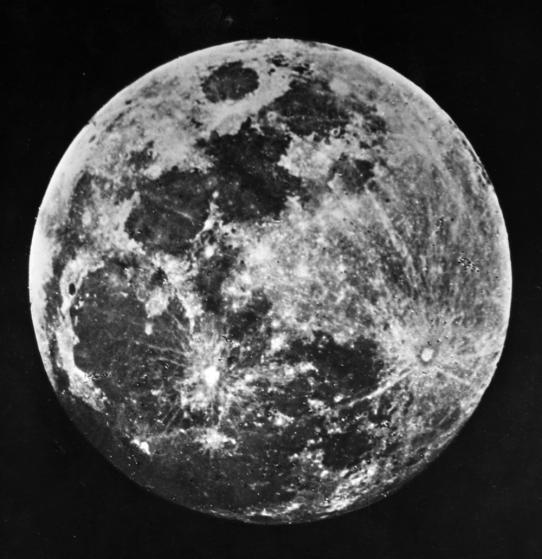

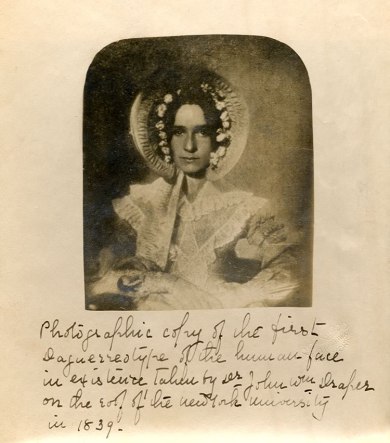

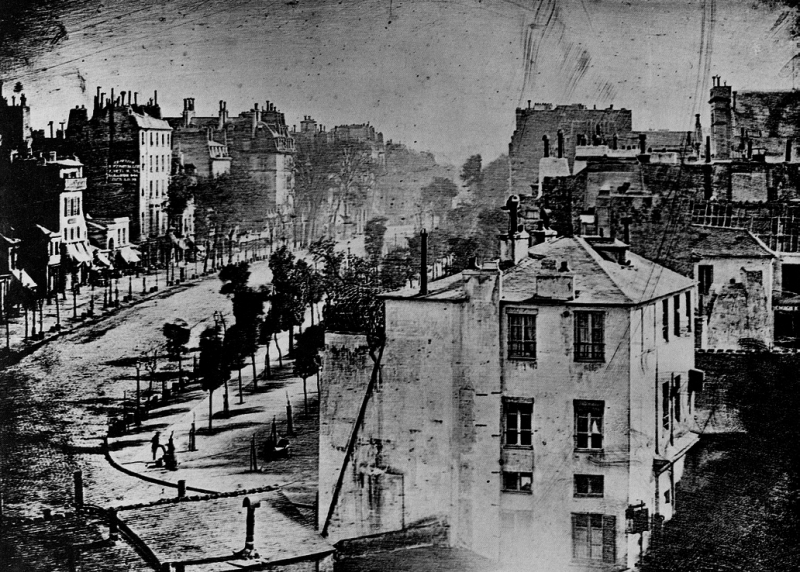

FIRST PHOTOGRAPHS OF THE MOON, FEMALE FACE, PEOPLE - 1839-40.
Daguerre himself is believed to be the first person to take a
photograph of the moon, using his daguerreotype process, on January 2,
1839. Unfortunately, in March of that same year, his entire laboratory
burnt to the ground, destroying all his written records and much of his
early experimental work and that historical image of the moon. A year
later, John William Draper, an American doctor and chemist, took his
own daguerreotype of the moon. John William
Draper (1811-1882) was an American scientist, philosopher,
physician, chemist, historian and photographer. He is also credited
with producing the first clear photograph of a female face when
he took a photo of his sister and assistant, dorothy.
Daguerre is credited with the first photograph of people as seen in the
lower left of the photo above. In the Spring of 1838 Louis
Daguerre made a photograph of the Boulevard du Temple in Paris.
The long exposure time made everything that was moving vanish from the
frame. Two people, a man having his boots shined and the shiner,
remained still long enough to be recorded in the photo.
http://time.com/3805947/the-first-photograph-of-the-moon/
https://contrastly.com/the-evolution-of-photography/
https://ragingfluff.wordpress.com/2014/03/23/the-first-photo-of-the-moon-march-23rd-1840/
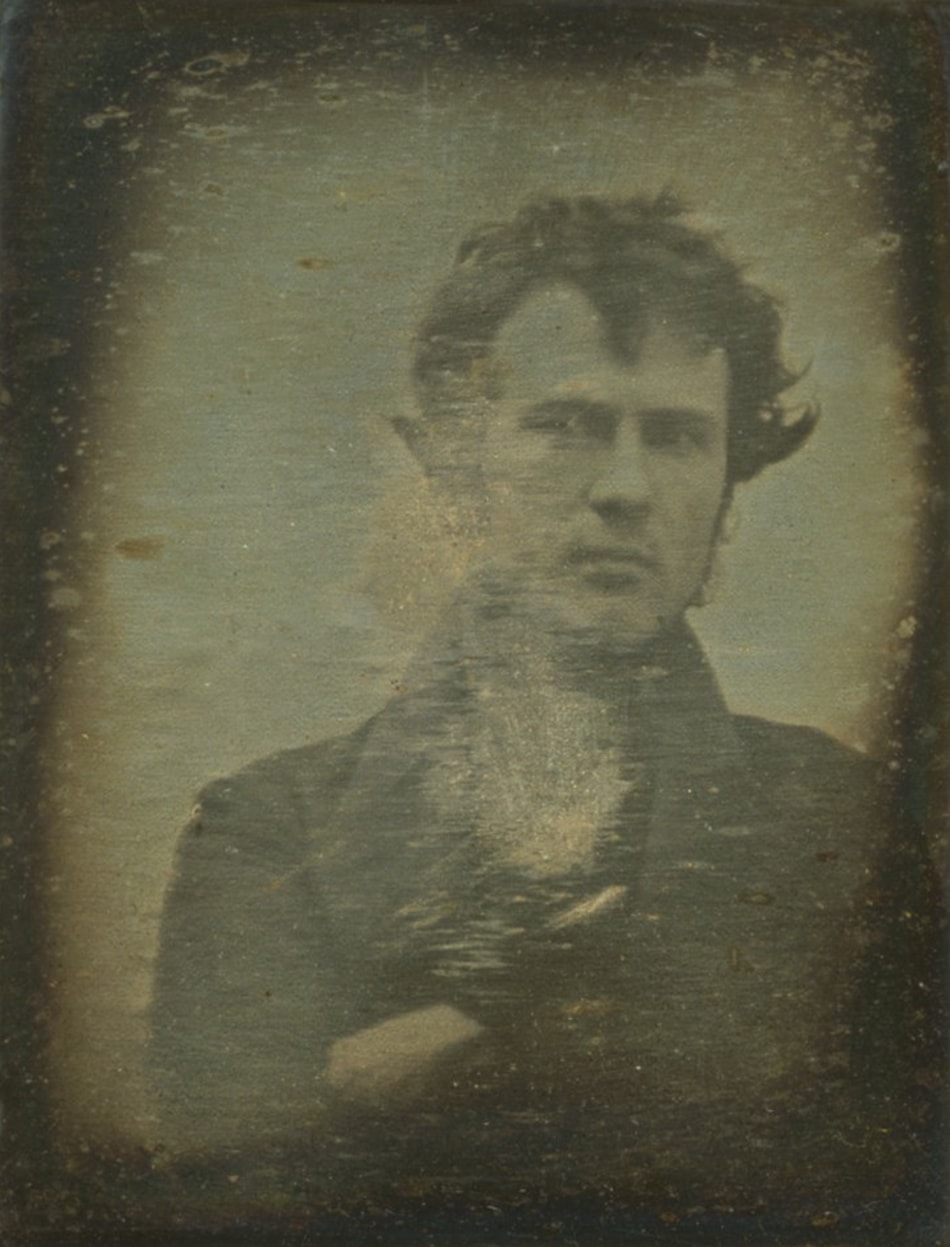
FIRST SELFIE - 1839.
This image is considered to be the first intentional portrait of a
human being. The subject and photographer is Robert Cornelius, an
American who worked in metal polishing and silver plating. In 1839,
Cornelius stood outside of his family's store and made what would be
the first selfie. This photo was the first time a person was
intentionally imaged using light.
https://contrastly.com/the-evolution-of-photography/
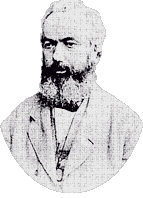
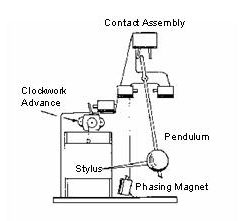

BAIN'S
TELEGRAPH - FIRST FACSIMILE (FAX) - 1843. In
1843, Scotsman
Alexander Bain patented a design for a mechanical device which used a
stylus
attached to an electromagnetic pendulum to send typed words over a
telegraph
line. The first commercial fax service was opened between Paris
and
Lyon, France, in 1865. Popularity of facsimile machines increased
significantly in 1906 and thereafter when they were employed for
transmitting
newspaper photos. For many interesting photographs and a complete
history of facsimile machines see
http://www.hffax.de/html/hauptteil_faxhistory.htm
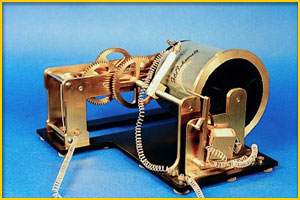

SHELLAC CONDUCTING ROLLER - 1847. Frederick Bakewell, England, improved upon Bain's design by using a clock mechanism and was the first to demonstrate a facsimile transmission.
http://en.wikipedia.org/wiki/Frederick_Bakewell
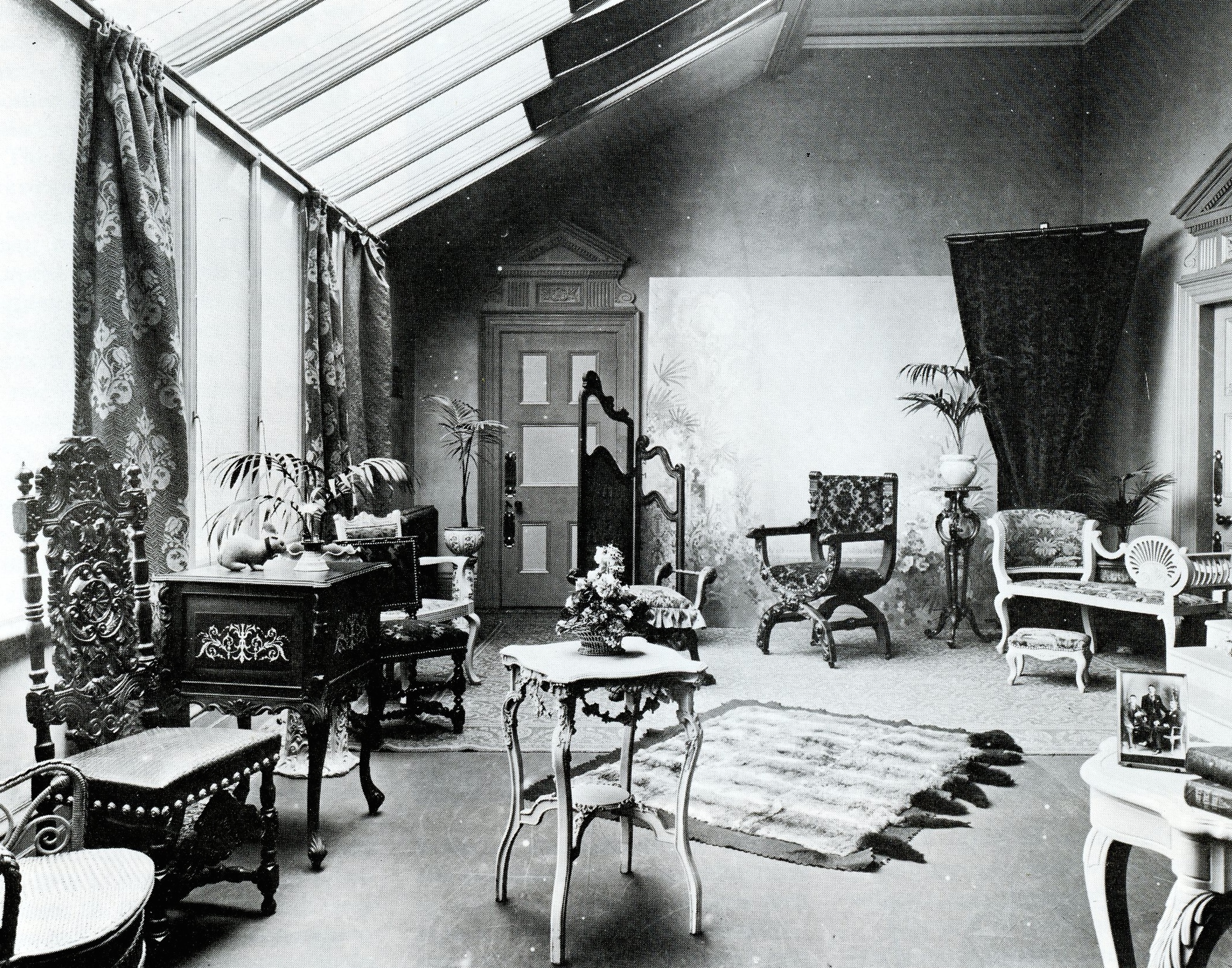
PHOTOGRAPHY - 1850. Above, early photographer's portrait studio. The complete photographist kit as found in an 1850 catalog: (Kit in this case would mean a horse-drawn wagon!) Estimate for a complete Daguerreotype Apparatus, suitable for the professional photographist, consisting of a large-sized camera and compound lens for large views, portraits, and groups; small size camera, with large aperture and short focus combination of lenses, for taking portraits up to 4 inches by 3 inches in dull weather; polishing lathe, with series of circular buffs; three hand buffs; set of metal plate holders and supports; heating stand; large bromine and iodine apparatus and set of frames; set of plate boxes to hold two dozen each; table stand for camera and rollers; adjusting chair, with head rest; adjusting head rest, with heavy iron foot for full-length portraits, &c.; large mercury box for the different sized plates; lantern, with yellow glass shade; metal still and worm tub for obtaining distilled water; a large and small gilding stand; stoneware barrel and cock for holding distilled water; porcelain dishes; filtering stand; funnels and filtering paper; spirit lamps; set of daguerreotype colours and brushes, and flexible India-rubber bottle; glass measures; two painted back grounds, &c., with a full supply of all the necessary chemicals, polishing materials, &c., complete, Wills, Camfield and Deirdre. History of Photography: Techniques and Equipment. Exeter Books. New York. 1980. Pages 13, 24.
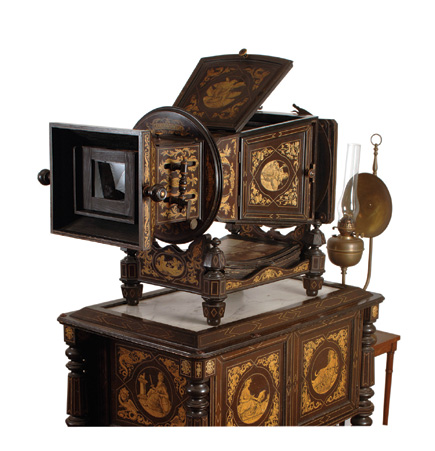
PONTI
MEGALETOSCOPIO -
1859.
The interesting device, built by Carlo Ponti, allowed the owner to view
his photographs in black and white in the daytime and in color at
night. This was accomplished by coloring the back of photographs and
then viewing them when lit from behind during darkness (one wonders why
they didn't just color the front of the photographs rather than build
such and elaborate device). The model shown is unique in that almost
all other similar models made by Ponti were of plain design while the
above model was inlaid with ivory as was the photo storage stand. This
model was in the Thurman Naylor Collection and on 19 October 2007 was
auctioned off for $42,500.
http://shutterbug.com/features/0906treasure/
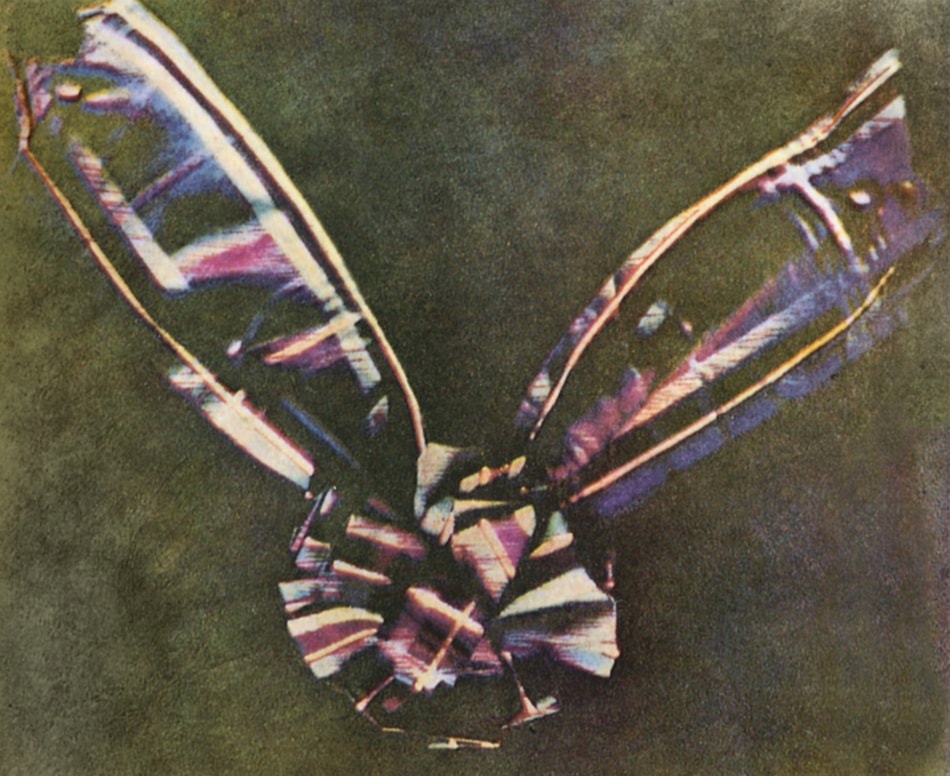
FIRST
COLOR PHOTO - 1861. The first known color photograph was produced in
1861 by Thimas Sutton, an English photographer and inventor. The photo
was made by stacking three black and white images which were themselves
each exposed using red, green, and blue filters. The image could then
be viewed in coloras a superimposition from three separate projectors
which each used a corresponding green, red, or blue filter. This method was first described by James Clerk Maxwell.
https://en.wikipedia.org/wiki/Thomas_Sutton_(photographer)
https://en.wikipedia.org/wiki/James_Clerk_Maxwell
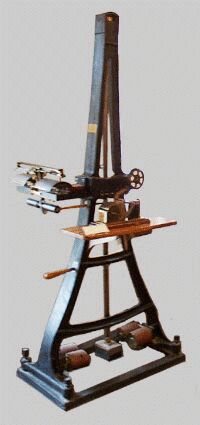
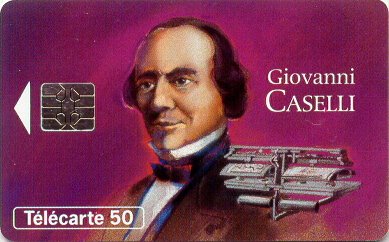

PANTELEGRAPH - 1861. Giovanni Caselli, Italy, developed the first commercial fax machine, sending messages between Paris and Lyon France.
http://en.wikipedia.org/wiki/Giovanni_Caselli 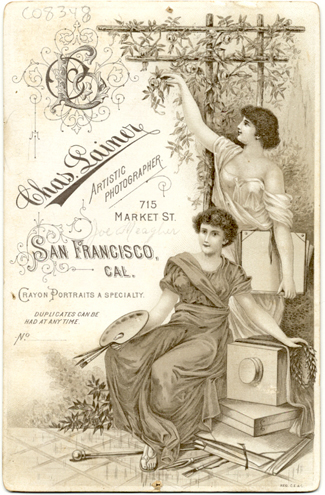
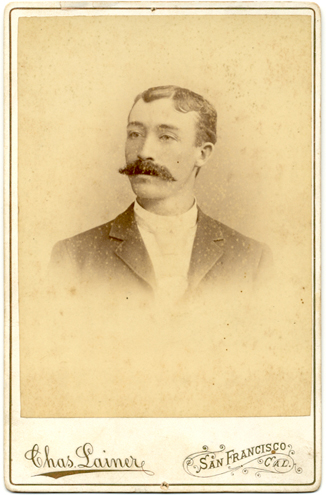
![]()
BUSINESS CARD - 1880s. Photographer's
business card, 1800s style. Advertisement on the front, sample print on
the back. Some business cards at that time were significantly larger than
today's credit-card sized models. This one is 4 x 6.5 inches.
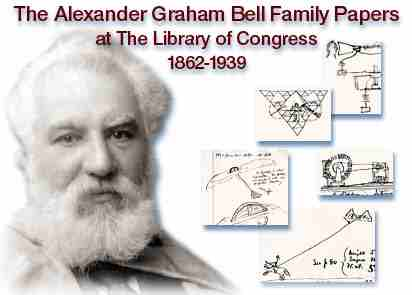
ALEXANDER
GRAHAM BELL - 1880s. Bell
proposed
an optical system for transmitting telephone signals without
wires.
Additional information concerning Alexander Graham Bell can be found
at:
https://en.wikipedia.org/wiki/Alexander_Graham_Bell
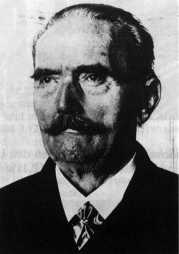
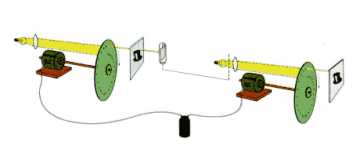

PAUL
NIPKOW - 1884. Nipkow, a German
inventor,
developed and patented the world's first electromechanical television
system,
however, he had no method of amplifying the very weak signals (produced
by a selenium cell) needed to build a workable receiver. Nipkow
used
a rotating disk to send pictures over a wire in 1884. This early
idea of "cable television" was abandoned as impractical since the
receiving
screen couldn't be any bigger than one square inch! Additional
information
concerning Paul Nipkow can be found at:
http://en.wikipedia.org/wiki/Paul_Gotlieb_Nipkow
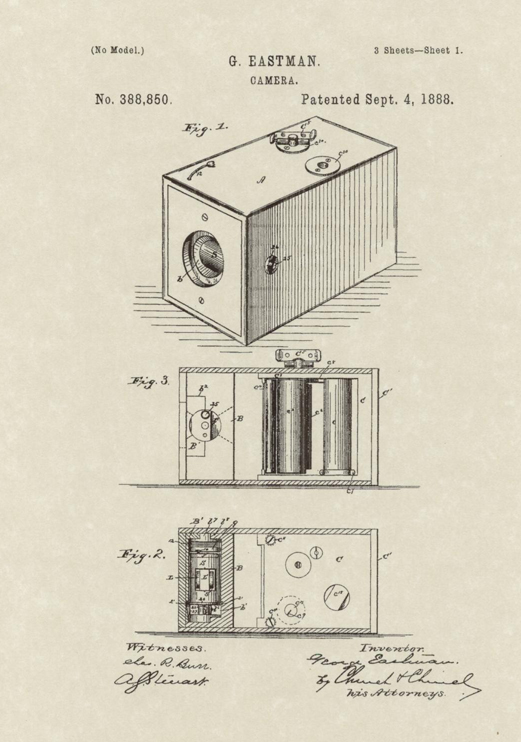
![]()
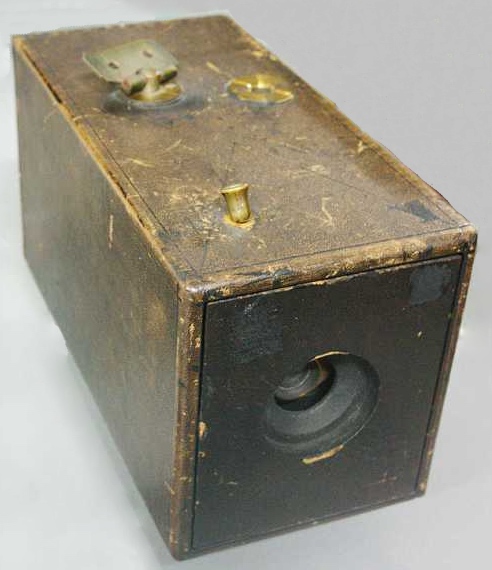
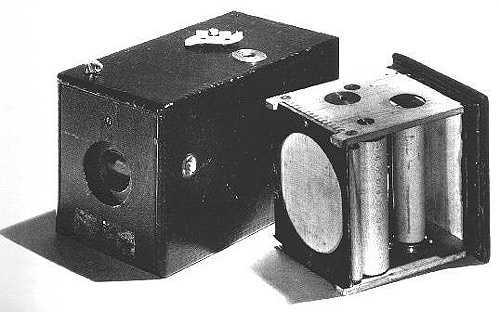
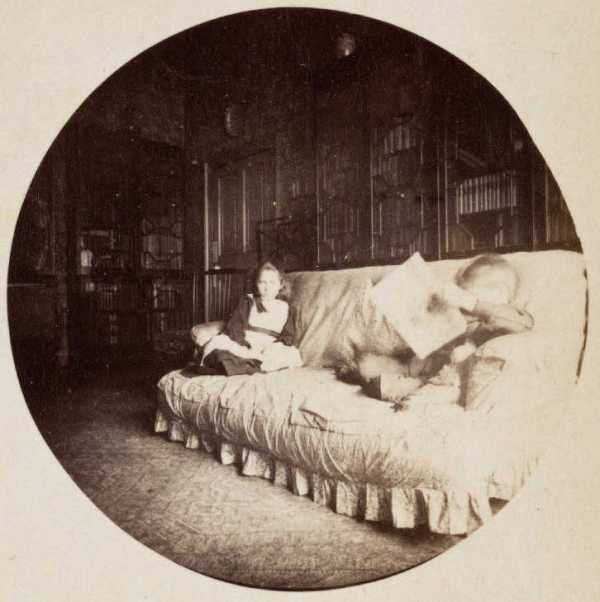
FIRST KODAK PATENT - KODAK NUMBER 1 - 1888. Copy
of the first page of George Eastman's first patented camera design.
Eastman coined the slogan, 'You press the button, we do the rest,' when
he introduced the Kodak camera in 1888 and within a year it became a
well-known phrase. He designed and patented the camera in 1886. It
was a box-box with a roller cassette designed for 48 (100 when it went
on sale) negatives of 4 x 5 inches format, with a focusing
optics. After several improvements, in 1888 George Eastman
released the revolutionary amateur camera Kodak number 1. The
camera lens transmitted a circular image of 2.25 inches in diameter
onto the film (1888 photo, girl on a couch). At $25 it was much
cheaper than other cameras of the time. After the film was full, the
buyer mailed the device along with the roller to Eastman Company in
Rochester, New York, where the film was taken out, developed, printed,
and the device was recharged, for which the client paid $ 10.
http://inventors.about.com/od/estartinventors/ss/George_Eastman.htm
https://www.brownie-camera.com/5.shtml
https://www.mikeeckman.com/2021/03/kepplers-vault-88-the-first-kodak/
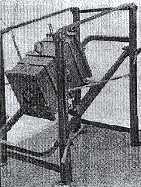
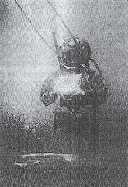
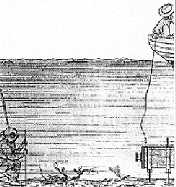
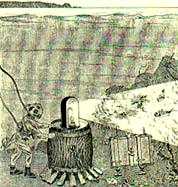

BOUTAN-CHAUFFOUR
FLASH BULB - 1893. The first flash
bulb
was designed by Frenchman Chauffour for use by underwater photographer
Louis Boutan. It contained magnesium inside a glass bulb filled
with
oxygen under pressure. A platinum wire heated by passing an
electric
current through it ignited the magnesium. Additional information
concerning Louis Boutan can be found at:
http://camera-wiki.org/wiki/Flashbulbs
http://encyclopedia.jrank.org/articles/pages/1249/Twentieth-Century-Photographic-Lighting.html
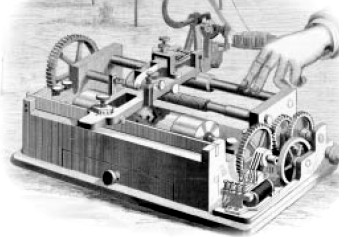
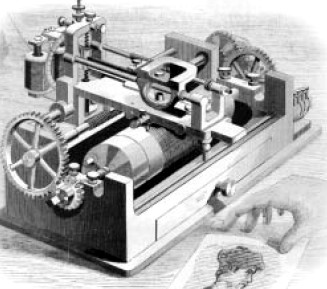
AMSTUTZ
ELECTRO-ARTROGRAPH - 1895.
The cover
story of a Scientific American issue described the Amstutz
Electro-Artrograph
which could scan photographs and transmit them over wire.
Illustrations
showed a photograph, drawings of the devices on route to the
destination,
and the photo as reproduced by a receiving device. Drawings of
transmitter and receiver shown above. Scientific American, April
1985, page 12. "Digital
Deal: Anniversaries Everywhere for Everything," Don Sutherland, Photo
Trade News, August 2000.
https://www.scientificamerican.com/article/the-amstutz-electro-artograph/
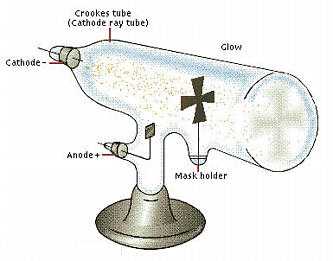
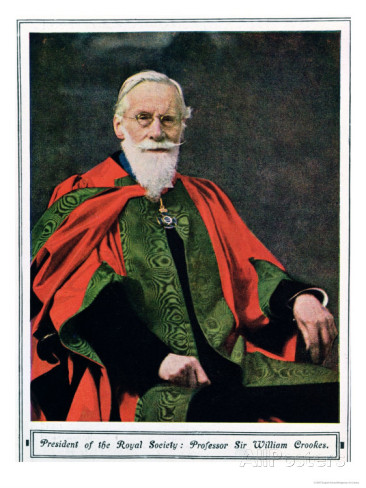

THE
CATHODE RAY TUBE (CRT) - 1897.
Electronic television is based on the development of the cathode ray
tube
(the picture tube found in television sets until LED came along). Cathode rays
were first identified in 1859 by Julius Plucker, a German mathematician
and physicist, but it was not until 1878 before William Crookes, a
British
chemist, would confirm the existence of cathode rays by building a tube
that displayed them. English physicist Ambrose Flemming, working
with Crookes' tube, would discover that cathode rays could be deflected
and focused. This was accomplished by wrapping the tube with wire
and passing an electric current through it creating a magnetic
field.
In 1897, German physicist Karl Braun developed the first cathode ray
oscilloscope.
Braun illuminated the cathode rays by placing fluorescent materials at
the end of the tube. As time passed these developments would be
applied
to the scanning system for the first television sets. Additional
information
concerning the cathode ray tube can be found at:
http://inventors.about.com/library/inventors/blcathoderaytube.htm
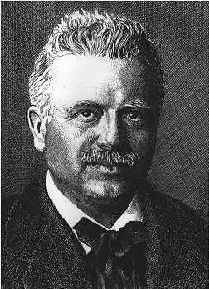
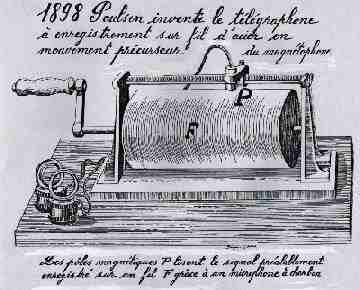

POULSEN
TELEGRAPHONE - 1898. On December 1st
1898, Valdemar Poulsen filed a patent in Denmark for the Telegraphone,
the first device in history to use magnetic sound recording. An
extract
from his patent reads: "The invention based upon the fact that when a
body
made of magnetisable material is touched at different points and at
different
times by an electromagnet included in a telephonic or telegraphic
circuit,
its parts are subject to such varied magnetic influences that
conversely
by the action of the magnetisable body upon the electromagnet the same
sounds or signals are subsequently given out in the telephone or
recording
instrument as those which previously caused the magnetic action upon
the
magnetisable body." At the 1900 Paris Exposition Poulsen recorded
the voice of Emperor Franz Joseph, creating what is believed to be the
earliest surviving magnetic recording. Additional information
concerning
Valdemar Poulsen can be found at:
http://www.sfmuseum.org/hist/poulsen.html
http://toutelatsf.free.fr/poulsen.htm
1800s